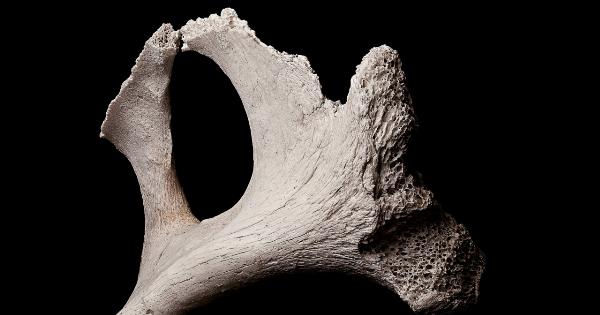When we think of bone-related issues, we usually tend to imagine the problems that come with old age such as osteoporosis or joint troubles. However, bone health has become a worldwide issue that affects people of all ages and backgrounds.
What is making our bones fragile?
The main factors that contribute to weak bones are inadequate nutrition, a lack of exercise, smoking, excessive alcohol, and certain medical conditions.
Our bones require calcium, vitamin D, and several other nutrients to stay strong and healthy. A diet deficient in these nutrients can lead to a decreased ability to form new bone tissue or repair older bone tissue.
Additionally, our bones need exercise to stay healthy, just like our muscles. Weight-bearing exercises, such as walking, jogging, or dancing, can promote bone growth and increase bone density.
On the other hand, a sedentary lifestyle can lead to the loss of bone density and make bones more susceptible to fractures.
Smoking and alcohol consumption can also negatively impact our bone health. Smoking increases the risk of fractures and impedes the bone healing process.
Excessive alcohol consumption can interfere with the body’s ability to absorb calcium and affect hormones that regulate bone metabolism.
Several medical conditions can also contribute to fragile bones, including osteoporosis, hormonal imbalances, and nutrition-related disorders such as anorexia nervosa.
The global impact of fragile bones
The worldwide impact of weak bones is significant. According to the International Osteoporosis Foundation, osteoporosis affects an estimated 200 million women worldwide, leading to about 8.9 million fractures annually.
Men are also affected by this condition, with an estimated 80 million men worldwide suffering from osteoporosis or low bone mass.
Furthermore, the economic burden of bone fractures is considerable. The cost of treating fractures associated with osteoporosis is anticipated to reach $25.3 billion by 2025, according to a report by the National Institutes of Health.
This economic burden extends beyond treatment costs and includes the impact on productivity and the workforce.
Prevention and treatment
Preventing and treating fragile bones requires a multifaceted approach that includes nutrition, exercise, and medical interventions.
A diet rich in calcium and vitamin D is essential for maintaining bone health. Foods such as dairy products, leafy greens, and oily fish are excellent sources of these nutrients.
Supplements can also help to fill any gaps in diet and ensure that individuals meet their daily recommended intake of calcium and vitamin D.
Regular exercise is also essential for keeping bones strong and healthy. Weight-bearing exercises are particularly effective in stimulating bone growth.
A combination of strength training and cardiovascular exercise can promote overall health and reduce the risk of osteoporosis and fractures.
In addition to lifestyle changes, medical interventions may also be necessary for some individuals. This may include medications to increase bone density or hormone therapy to address hormonal imbalances.
The role of government and healthcare systems
The issue of fragile bones requires a coordinated effort from government bodies, healthcare systems, and individuals.
Governments can promote bone health initiatives through policies that encourage physical activity, provide access to healthy foods, and increase awareness about the importance of maintaining bone health.
Healthcare systems can take a preventative approach by screening individuals for risk factors and providing preventative measures such as nutrition counseling and exercise programs.
Additionally, healthcare professionals can play a crucial role in educating patients about the importance of maintaining bone health and developing personalized treatment plans.
Conclusion
The state of our bones is a global crisis that requires attention and action. By promoting lifestyle changes, increasing awareness, and providing accessible healthcare, we can work towards preventing and treating fragile bones.































